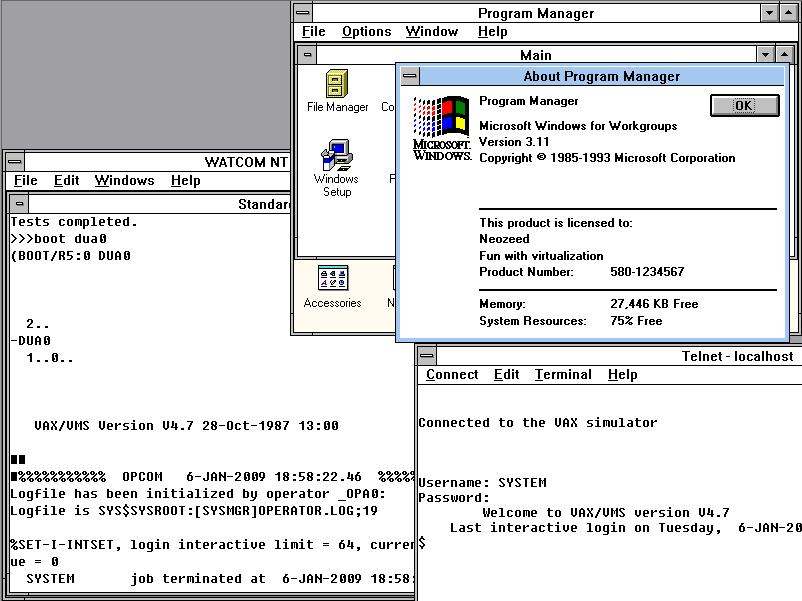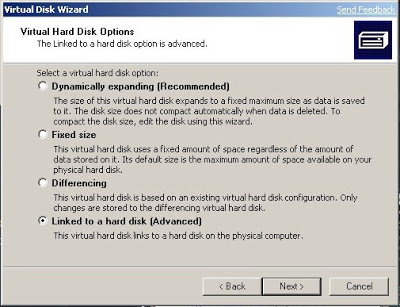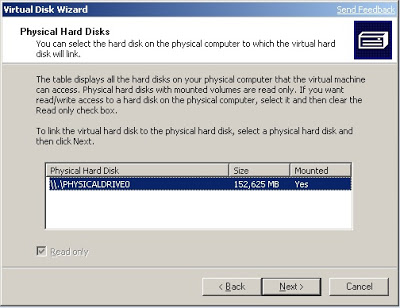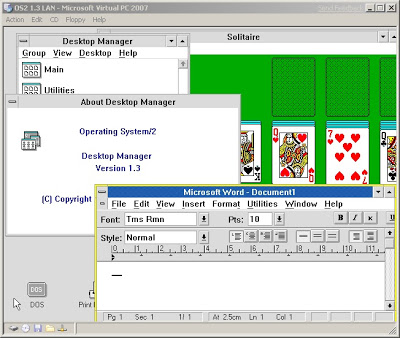Well I planned on doing an update, but I didn’t get around to it. I’ll post my fun thru dec alpha fun later.
In the meantime, I was combing ebay, and I saw a cheap copy of Watcom C++ version 11. Now back in college I had 10.0, and it was AWESOME! It does 16bit & 32bit development of OS/2 MS-DOS and even Windows… For some reason the guy who sold the Watcom 11 included some techsupport thing he had going on, and included a tidbit about their being a ‘Default-windows application [-bw]’ (it’s on page 7 of C compiler settings) and it’s like the old Borland C++ for windows, or QuickC for windows days… It’s too bad I never knew it was there, as it allows for easy text mode stuff to win32 enviroments like … Win32s.
Now Win32s was one of those funny things, in which some smart people noticed that for the most part the ‘core’ of Win32 was a superset of Win16, and all they needed to do was hook the program loader, load the win32 exe into a relocatable space, then thunk all the win32 calls into win16 calls allowing a bunch of win32 applications to run on Windows 3.1! This was somewhat popular as most peoples machines at the time were not powerfull enough to run Windows NT 3.1, or they simply wished not to. And Windows 95 was going to be nearly another 2 years away…
Anyways, I’ve always thought SIMH was cool in that it’s super portable, so spending 20 minutes clearing out the ‘win32 console’ specific stuff from the code, I was able to build up a version that not only runs on Win32s on Windows 3.1, but also supports the TCP/IP remote console.
Here is a screen shot of my Windows 3.1 running under Virtual PC, telnetted to itself running the simh microvax running VMS 4.7

A Win32s VAX!
Anyways it’s too little too late, but I think it’s still cool. The neat thing about this is since it’ll run on Win32s is that it’ll run on dammed near any emulator as it’ll conform to such a subset.. Or so I’m hoping. I imagine it should also run under OS/2 3.0’s win32s emulation as well… And yes I’ve tested it with Win32s 1.25a that’s before Microsoft ‘fixed’ it to break all the OS/2 users out there…





